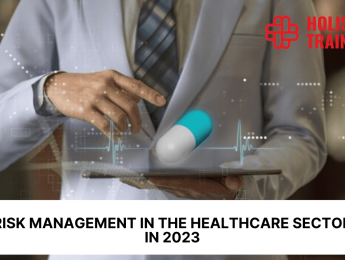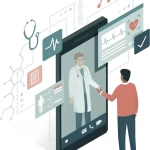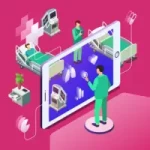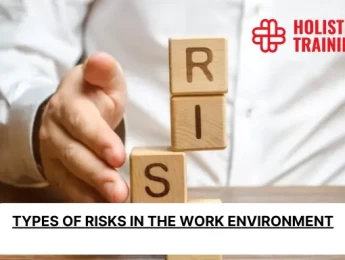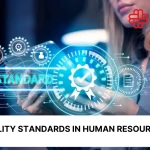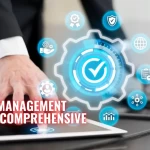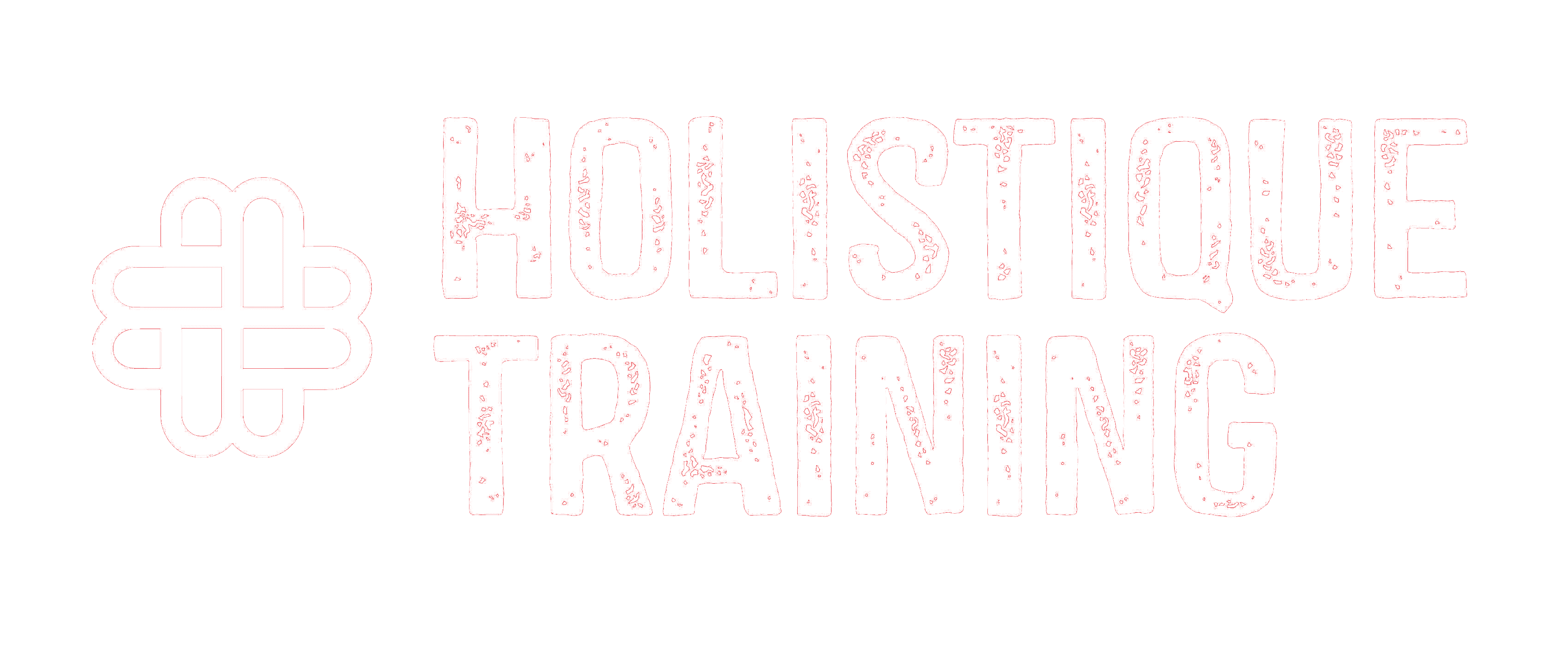- Table of Contents
- Introduction
- What Is Risk Management?
- Why Is Risk Management Important in Healthcare?
- Process and Key Components of Risk Management in Healthcare
- How to Create a Healthcare Risk Management Plan
- Healthcare Enterprise Risk Management (ERM)
- Personal Protective Equipment for Worker Safety
- Risk Management Technology in Healthcare
- How to Become Better at Risk Management as a Healthcare Professional
- Conclusion
Introduction
Healthcare is a field where decisions can have life-or-death consequences. With this level of responsibility, it's imperative that healthcare professionals, institutions, and organisations adopt a meticulous approach to minimise potential risks. In this comprehensive guide, we delve deep into the realm of risk management in healthcare. We'll explore what risk management entails, its significance in the healthcare sector, the process and key components, creating a risk management plan, the concept of Healthcare Enterprise Risk Management (ERM), the importance of Personal Protective Equipment (PPE) for worker safety, the role of technology, and how healthcare professionals can enhance their risk management skills.
What Is Risk Management?
At its core, risk management is the systematic process of identifying, assessing, and mitigating risks to ensure the well-being of patients, healthcare providers, and the overall healthcare organisation. In healthcare, these risks can encompass medical errors, malpractice, financial instability, natural disasters, and even cyber threats.
Why Is Risk Management Important in Healthcare?
The importance of risk management in healthcare cannot be overstated. Here are some compelling reasons why it's a critical component of the healthcare landscape:
Patient Safety and Quality of Care
Patient safety is the cornerstone of healthcare. Risks, if not managed effectively, can compromise the safety of patients. Whether it’s a misdiagnosis, medication error, or surgical complication, these incidents can lead to serious harm or even fatalities. Effective risk management protocols identify potential hazards in clinical processes, ensuring that patients receive the highest quality of care without unnecessary complications.
Legal and Financial Consequences
In the litigious society we live in, medical errors can result in costly lawsuits. Malpractice claims and legal disputes can drain an institution's financial resources, leading to financial instability. Effective risk management strategies help mitigate legal risks by identifying potential issues before they escalate, saving both money and reputation.
Continuous Quality Improvement
Healthcare is a dynamic field, with new treatments, medications, and technologies constantly emerging. Risk management not only identifies current risks but also pinpoints areas for improvement. By learning from incidents and near-misses, healthcare providers can implement changes in protocols and procedures, ensuring continuous quality improvement and a higher standard of care.
Regulatory Compliance and Accreditation
Healthcare organisations operate in a highly regulated environment. Various laws and regulations govern healthcare practices to protect patients and maintain standards. Compliance failures can lead to severe penalties and loss of accreditation. Robust risk management processes help healthcare institutions adhere to these regulations, ensuring that they stay in compliance and avoid legal ramifications.
Reputation Management
A hospital or healthcare provider's reputation is one of its most valuable assets. Patients trust healthcare institutions with their lives, and any negative publicity can lead to a loss of trust, affecting patient numbers and partnerships. By managing risks effectively, institutions can prevent adverse incidents, maintain patient satisfaction, and preserve their reputation in the community.
Resource Optimisation
Efficient risk management helps in optimal resource allocation. By identifying and prioritising risks, healthcare organisations can focus their resources, including staff time and budgets, on areas where the risk is the highest. This strategic allocation ensures that efforts are concentrated where they are needed the most, maximising the impact of risk mitigation strategies.
Public Health and Community Well-being
In the broader context, effective risk management in healthcare contributes significantly to public health. By preventing the spread of infections, reducing medical errors, and ensuring the overall safety of healthcare practices, risk management initiatives have a direct positive impact on community health. Healthy communities, in turn, lead to a healthier society overall.
In short, the importance of risk management in healthcare extends far beyond the confines of hospitals and clinics. It is a linchpin that ensures patient safety, financial stability, legal compliance, and community well-being. Healthcare professionals and institutions must continue to invest in robust risk management strategies to safeguard both their patients and their own future in the ever-evolving landscape of healthcare.
Process and Key Components of Risk Management in Healthcare
The risk management process in healthcare involves several key components:
1. Risk Identification
The first step in effective risk management is identifying potential risks. In healthcare, this involves a comprehensive analysis of various factors. This includes clinical risks such as medical errors, complications, and infections. Operational risks encompass issues like staffing shortages, supply chain disruptions, and equipment failures. Financial risks involve billing errors, insurance issues, and budget overruns. External risks, including natural disasters and regulatory changes, must also be considered. Engaging frontline staff, administrators, and even patients can provide valuable perspectives in identifying these risks comprehensively.
2. Risk Assessment
Once risks are identified, they need to be assessed. This involves determining the likelihood of the risk occurring and the potential impact if it does. Risks can be categorised based on severity and probability, helping healthcare organisations prioritise their focus. Data analysis, historical records, and expert opinions aid in this assessment, providing a quantitative and qualitative basis for decision-making.
3. Risk Mitigation
After assessing risks, the next step is to develop strategies to mitigate them. These strategies should be proactive, aiming to prevent the occurrence of the identified risks or minimise their impact. For example, to mitigate the risk of hospital-acquired infections, strict hand hygiene protocols and regular sanitation practices can be implemented. Staff training, process improvements, and the development of clear policies and procedures are essential components of effective risk mitigation.
4. Monitoring and Review
Risk management is not a one-time activity; it's an ongoing process. Regular monitoring and review are vital components of risk management in healthcare. Monitoring ensures that implemented risk mitigation strategies are effective and are being followed correctly. Regular reviews of incidents and near-misses provide learning opportunities. By analysing these events, healthcare organisations can identify trends and patterns, allowing for continuous improvement of existing protocols and the development of new ones.
5. Incident Reporting and Analysis
Encouraging a culture of reporting incidents and near-misses is crucial. Healthcare professionals should feel empowered to report any issues without fear of reprisal. When incidents occur, a thorough root cause analysis should be conducted. Understanding why an incident happened is as important as preventing its recurrence. Root cause analysis provides valuable insights into system failures, human errors, or communication breakdowns, allowing healthcare organisations to address these issues at their core.
6. Integration with Organisational Goals
Risk management shouldn’t exist in isolation. It needs to be integrated into the organisation’s overall strategic planning and decision-making processes. Risks should be assessed concerning their impact on organisational objectives. By aligning risk management with strategic goals, healthcare organisations can prioritise risks that pose the most significant threat to achieving these objectives. This integration ensures that risk management becomes an integral part of the organisational culture, influencing decision-making at all levels.
In essence, the process of risk management in healthcare is a cyclical and interconnected series of activities. It's a dynamic approach that evolves with the changing landscape of healthcare. By diligently following these steps and embracing a culture of continuous improvement, healthcare organisations can navigate the complex challenges of patient care, regulatory compliance, and financial stability with resilience and confidence.
How to Create a Healthcare Risk Management Plan
Creating a healthcare risk management plan is a meticulous process that requires careful analysis, strategic thinking, and a commitment to ensuring the safety and well-being of patients, healthcare professionals, and the organisation as a whole. Here’s how to create an effective healthcare risk management plan:
1. Identify Risks Thoroughly
Begin by conducting a comprehensive risk assessment. Engage stakeholders from various departments and levels within the organisation. Gather data from incident reports, historical records, and industry benchmarks. Analyse the organisation's specific challenges and vulnerabilities. By understanding the unique risks faced, you can create a targeted and effective risk management plan.
2. Assess Risks Quantitatively and Qualitatively
Once risks are identified, assess them both quantitatively and qualitatively. Use established risk assessment tools and methodologies to assign numerical values to risks based on their likelihood and impact. Qualitatively, consider the context and potential consequences of each risk. Prioritise risks based on these assessments to focus your efforts on the most critical areas.
3. Develop Clear Mitigation Strategies
For each identified risk, develop specific and actionable mitigation strategies. These strategies should be tailored to the nature of the risk. For instance, if the risk involves medication errors, strategies might include implementing barcode scanning systems, enhancing staff training, and employing automated medication dispensing systems. Each strategy should have a clear objective, responsible parties, deadlines, and measurable outcomes.
4. Allocate Resources Appropriately
Ensure that the necessary resources, including personnel, budget, and technology, are allocated to implement the identified strategies effectively. Adequate staffing, training programmes, and technological investments are crucial components of resource allocation. Without the right resources, even the most well-thought-out strategies may fall short.
5. Establish Protocols and Standard Operating Procedures (SOPs)
Develop detailed protocols and SOPs based on the mitigation strategies. SOPs should outline step-by-step procedures to follow in various scenarios. Regularly update these documents to incorporate new learnings and changes in the healthcare landscape. Ensuring that every staff member is familiar with and adheres to these protocols is essential for the successful implementation of risk management strategies.
6. Continuous Monitoring and Evaluation
Implement a robust monitoring and evaluation system to track the progress of your risk management plan. Regularly assess the effectiveness of the implemented strategies. Monitor incident reports and near-misses. Adjust strategies as necessary based on real-time data and feedback. Continuous monitoring enables proactive adjustments, ensuring that the risk management plan remains relevant and effective.
7. Educate and Train Staff
Educate all staff members about the risk management plan, their roles in its implementation, and the importance of adhering to established protocols. Conduct regular training sessions to keep everyone up-to-date with the latest procedures and best practices. Well-informed and trained staff are the frontline defence against many risks, making their education a critical component of the risk management plan.
8. Engage in Simulation and Drills
Regularly conduct simulations and drills to test the organisation’s response to potential risks. Simulated scenarios help staff members practise implementing protocols in a controlled environment. By identifying strengths and weaknesses through these drills, the organisation can further refine its risk management strategies and improve staff readiness for real-life incidents.
9. Create a Culture of Safety and Accountability
Foster a culture where safety is a shared responsibility. Encourage open communication, where staff members feel comfortable reporting incidents and suggesting improvements. Recognise and reward individuals and teams for their contributions to risk management and patient safety. A culture of safety and accountability ensures that risk management becomes ingrained in the organisation's ethos.
10. Regularly Review and Update the Plan
The healthcare landscape is dynamic, with new technologies, treatments, and regulations constantly emerging. Regularly review and update the risk management plan to adapt to these changes. Conduct periodic risk assessments to identify new risks or changes in the significance of existing risks. An updated plan ensures that the organisation remains agile and prepared to address evolving challenges effectively.
In summary, creating a healthcare risk management plan is a multifaceted process that demands attention to detail, proactive planning, and a commitment to continuous improvement. By diligently following these steps and integrating risk management into the organisation's culture, healthcare institutions can safeguard patients, staff, and their own sustainability in the face of ever-changing risks.
Table 1: The importance of having a risk management plan in healthcare
Aspect | Importance |
Patient Safety | Prevents errors, enhances medical care quality. |
Legal Compliance | Abides by regulations, avoids legal repercussions. |
Financial Stability | Reduces costly lawsuits, safeguards financial resources. |
Operational Efficiency | Streamlines processes, optimises resource allocation. |
Reputation Management | Maintains trust, preserves the institution’s credibility. |
Staff Well-being | Ensures worker safety, boosts morale, reduces turnover. |
Community Confidence | Builds community trust, supports public well-being. |
Healthcare Enterprise Risk Management (ERM)
Healthcare Enterprise Risk Management (ERM) is an advanced approach to risk management that considers risks at an organisational level, rather than focusing on individual risks in isolation. ERM integrates risk management into the overall strategic planning and decision-making processes of healthcare institutions. It involves:
a. Identifying Risks at an Organisational Level
Healthcare ERM begins with identifying risks that could impact the achievement of the organisation’s strategic objectives. These risks extend beyond clinical issues and encompass a wide range of areas such as financial, operational, legal, regulatory, reputational, and strategic risks. By casting a broad net, ERM ensures that no critical risk is overlooked.
b. Prioritising Risks Based on Impact and Likelihood
Once risks are identified, ERM categorises and prioritises them based on their potential impact on the organisation and the likelihood of their occurrence. This prioritisation helps in focusing resources and attention on the most significant risks. Risks with high impact and high likelihood receive immediate attention, but ERM also addresses risks with high impact but low likelihood, recognising their potential severity.
c. Developing Integrated Risk Management Strategies
ERM doesn't isolate risk management activities but integrates them into the organisation’s overall strategy. It involves developing comprehensive strategies that address multiple risks simultaneously. For example, a strategic ERM initiative might involve improving data security protocols to mitigate both cybersecurity threats and regulatory compliance risks. Integrated strategies ensure a cohesive approach to risk mitigation, optimising resource utilisation.
d. Cultivating a Risk-Aware Culture
Healthcare ERM aims to create a culture where risk awareness is ingrained in the organisation’s DNA. This involves educating staff at all levels about the importance of risk management, their role in identifying and mitigating risks, and how their actions contribute to the organisation's overall risk profile. When employees are aware of risks and understand how to mitigate them, they become active participants in the risk management process.
e. Strategic Decision-Making with Risk in Mind
In an ERM framework, risk considerations become integral to strategic decision-making. When evaluating new initiatives, investments, or partnerships, organisations assess the associated risks and develop strategies to manage them. ERM ensures that risks are not merely viewed as obstacles but as factors that inform and shape strategic choices. By making risk-aware decisions, organisations can navigate uncertainties more effectively.
f. Continuous Monitoring and Reporting
ERM involves continuous monitoring of identified risks and the effectiveness of mitigation strategies. Regular reports are generated and shared with key stakeholders, including the board of directors and senior leadership. Transparent communication regarding the organisation's risk profile, ongoing initiatives, and any changes in the risk landscape is vital. Real-time data enables timely adjustments to strategies, ensuring that the organisation remains agile in its risk management efforts.
g. Adapting to Changing Risks and Regulatory Environment
The healthcare industry is subject to constant change, including evolving regulatory requirements and emerging risks. ERM frameworks are designed to be adaptable. They can respond swiftly to new risks and regulatory mandates. By staying ahead of the curve, organisations can proactively address challenges, ensuring compliance and minimising potential disruptions to operations.
h. Stakeholder Engagement and Communication
ERM emphasises engaging with various stakeholders, including patients, staff, suppliers, and the community. Actively seeking feedback from these groups can uncover risks that might not be immediately apparent. Additionally, transparent communication with stakeholders about the organisation's risk management efforts fosters trust and confidence, enhancing the institution's reputation.
Personal Protective Equipment for Worker Safety
Worker safety is a paramount concern in healthcare, and Personal Protective Equipment (PPE) plays a pivotal role in safeguarding healthcare professionals from occupational hazards. PPE includes items such as gloves, masks, gowns, and face shields. Here's how PPE contributes to risk management:
- Infection Control: PPE helps prevent the transmission of infectious diseases in healthcare settings, reducing the risk of healthcare-associated infections (HAIs).
- Chemical Exposure: PPE safeguards healthcare workers from exposure to hazardous chemicals and drugs, protecting them from potential health risks.
- Physical Hazards: In some situations, PPE can shield workers from physical hazards like splashes, cuts, and punctures.
- Psychological Well-being: Ensuring that healthcare workers have access to appropriate PPE fosters a sense of security and reduces stress, improving overall job satisfaction.
- Regulatory Compliance: Compliance with PPE protocols is often mandated by regulatory bodies, ensuring that healthcare organisations meet safety standards.
Risk Management Technology in Healthcare
The healthcare industry is increasingly embracing technology to enhance risk management practices. In fact, statistics show that the AI healthcare market is anticipated to attain $208.2 billion by 2030, with a Compound Annual Growth Rate (CAGR) of 37.5%. That being said, here are some ways technology is revolutionising risk management in healthcare:
Electronic Health Records (EHRs) and Data Analytics:
According to Koru UX, a recent study revealed that 93% of primary care practitioners across 24 countries have adopted digital technologies, including electronic medical records (EMRs). EHRs store comprehensive patient data electronically. Advanced EHR systems are equipped with data analytics capabilities, allowing healthcare providers to identify patterns, trends, and potential risks. By analysing large sets of patient data, healthcare organisations can detect early warning signs, predict outcomes, and identify areas where risks are likely to occur, enabling proactive risk mitigation strategies.
Predictive Analytics and Machine Learning:
Predictive analytics and machine learning algorithms analyse historical and real-time data to predict future events. In healthcare, these technologies can forecast patient admission rates, identify patients at risk of specific conditions, and even anticipate disease outbreaks. By understanding these predictions, healthcare organisations can allocate resources effectively, plan for contingencies, and implement preventive measures, thereby reducing risks.
Telehealth and Remote Monitoring:
Telehealth technologies enable remote patient consultations and monitoring. Remote monitoring devices collect real-time patient data, allowing healthcare providers to monitor vital signs and other health metrics continuously. By remotely monitoring patients, healthcare professionals can intervene promptly in case of emergencies, reducing the risk of adverse events, especially in chronic disease management scenarios.
Cybersecurity Solutions:
Healthcare organisations are prime targets for cyberattacks due to the sensitive patient information they store. Robust cybersecurity solutions, including firewalls, encryption tools, and intrusion detection systems, safeguard patient data from unauthorised access and cyber threats. Regular security assessments and penetration testing help identify vulnerabilities, enabling organisations to address them before malicious actors exploit them.
Artificial Intelligence (AI) for Risk Detection:
AI algorithms analyse vast amounts of medical data to identify patterns and anomalies that may indicate potential risks. These technologies can assist in early detection of diseases, flagging medication interactions, and predicting complications. AI-driven risk detection tools empower healthcare professionals to intervene proactively, preventing adverse events and ensuring patient safety.
Communication and Collaboration Tools:
Effective communication is vital in managing risks. Healthcare organisations utilise secure messaging platforms, video conferencing tools, and collaborative software to facilitate communication among staff members. Timely communication ensures that critical information reaches the right people promptly, enabling swift responses to emerging risks, patient emergencies, or other unforeseen events.
Incident Reporting and Management Systems:
Specialised incident reporting and management systems allow healthcare staff to report incidents and near-misses easily. These systems track reported incidents, categorise them, and facilitate thorough investigations. By analysing incident reports, healthcare organisations can identify recurring issues, trends, and areas for improvement, guiding the development of targeted risk mitigation strategies.
Mobile Health (mHealth) Applications:
mHealth applications provide patients with tools to monitor their health, schedule appointments, and access medical information. These applications often integrate with EHR systems, allowing healthcare providers to gather additional patient data remotely. By utilising mHealth apps, healthcare organisations enhance patient engagement, collect valuable health data, and proactively address patient concerns, reducing the risks associated with delayed medical interventions.
Geographic Information Systems (GIS):
GIS technology maps geographic locations and overlays them with various data sets, enabling healthcare organisations to visualise disease outbreaks, identify high-risk areas, and plan resource allocation accordingly. During emergencies, such as natural disasters or pandemics, GIS technology assists in coordinating responses, ensuring that affected populations receive timely healthcare services.
Adopting Blockchain for Enhanced Security:
Blockchain technology has emerged as a game-changer in healthcare risk management. In fact, according to CodeIt, more than half, specifically 55% of healthcare vendors, are anticipated to integrate blockchain technology into their systems by 2025. Its decentralised and immutable nature ensures secure, transparent, and tamper-proof storage of patient data. By adopting blockchain, healthcare organisations enhance data integrity, streamline transactions, and safeguard sensitive information from cyber threats, contributing significantly to comprehensive risk management strategies.
Table 2: Healthcare then vs. now
How to Become Better at Risk Management as a Healthcare Professional
Improving your skills in risk management as a healthcare professional is essential for providing safe and high-quality care. Here are some steps you can take:
1. Continuous Education and Training
Staying updated with the latest developments in healthcare practices and risk management methodologies is essential. Healthcare professionals should engage in continuous education and attend workshops, seminars, and conferences focused on risk management. Regular training programmes keep professionals informed about emerging risks and effective mitigation strategies.
2. Understand the Healthcare Landscape
Healthcare professionals must have a comprehensive understanding of the industry, including regulatory requirements, patient rights, and legal obligations. Knowing the specific risks associated with different medical specialties or procedures allows professionals to tailor their risk management efforts effectively.
3. Effective Communication Skills
Clear and concise communication is at the heart of risk management. Healthcare professionals need to be adept at conveying risks, mitigation strategies, and safety protocols to both colleagues and patients. Effective communication ensures that everyone involved understands their roles and responsibilities, fostering a culture of safety.
4. Participate in Interdisciplinary Collaborations
Collaborating with colleagues from diverse healthcare disciplines provides valuable insights into different perspectives on risk. Interdisciplinary collaborations enhance problem-solving skills and promote a holistic approach to risk management. Learning from others’ experiences and best practices strengthens one’s own risk management strategies.
5. Engage in Incident Reporting and Analysis
Actively participating in incident reporting systems allows healthcare professionals to contribute to the organisation’s learning process. Reporting incidents and near-misses, as well as participating in root cause analyses, provide essential data for identifying systemic issues and implementing preventive measures. Learning from mistakes is a cornerstone of effective risk management.
6. Embrace Technology
Healthcare professionals should familiarise themselves with risk management technologies used in their institutions. Understanding how to utilise electronic health records (EHR) systems, incident reporting software, and data analytics tools enhances professionals’ ability to monitor and analyse risks. Technological proficiency allows for more efficient risk assessment and management processes.
7. Develop Critical Thinking Skills
Critical thinking is vital for assessing risks accurately and devising effective mitigation strategies. Healthcare professionals need to evaluate complex situations, anticipate potential outcomes, and make informed decisions swiftly. Developing critical thinking skills enables professionals to analyse risks from various angles, leading to more robust risk management strategies.
8. Stay Ethical and Patient-Centric
Ethical decision-making is fundamental to risk management in healthcare. Professionals should always prioritise patient safety, confidentiality, and informed consent. Upholding ethical standards ensures that risk management efforts align with the best interests of patients and the broader community, fostering trust and confidence.
9. Mentorship and Learning from Experienced Colleagues
Experienced colleagues often possess valuable insights and practical knowledge about risk management. Seeking mentorship from seasoned professionals allows younger healthcare workers to learn from real-life experiences. Mentorship relationships provide a supportive environment for asking questions, discussing concerns, and gaining practical wisdom.
10. Self-Reflection and Continuous Improvement
Lastly, healthcare professionals should engage in regular self-reflection. Analysing one’s own actions and decisions in various situations helps identify areas for improvement. Embracing a mindset of continuous improvement ensures that professionals are constantly refining their risk management skills, staying adaptable in the face of evolving challenges.
Conclusion
In the intricate tapestry of healthcare, risk management is the thread that weaves safety, quality, and efficiency together. As healthcare professionals, institutions, and organisations continue to face evolving challenges, embracing proactive risk management practices is not just a choice but a necessity. By understanding the intricacies of risk, adopting advanced technologies, and honing individual skills, healthcare professionals can navigate the complex terrain of healthcare with confidence, ensuring the best possible outcomes for patients and the sustainability of healthcare organisations in an ever-changing world.
If you're looking to enhance your skills in healthcare risk management and take your expertise to the next level, consider enrolling in our course, ‘Healthcare Management Excellence.’ This comprehensive course will equip you with advanced strategies, cutting-edge technologies, and the knowledge to navigate the complexities of risk management in the modern healthcare environment, ensuring the highest standards of patient care and organisational success. Join us in shaping a safer, more resilient future for healthcare.

